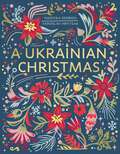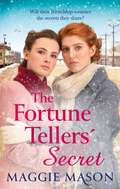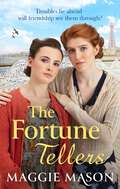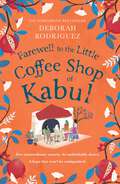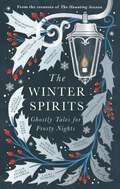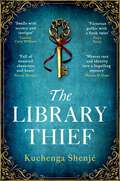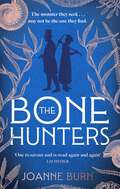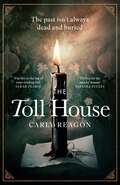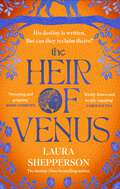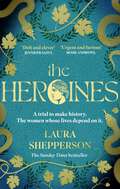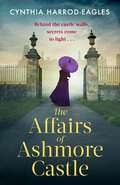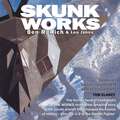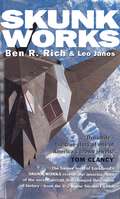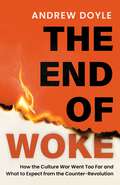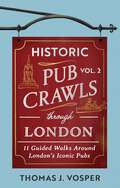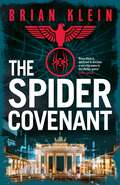- Table View
- List View
A Ukrainian Christmas
by Yaroslav Hrytsak Nadiyka Gerbish'History, stories, recipes and beautiful illustrations' - OLINA HERCULES'Christmas brings the indestructibility of hope in times of the greatest hopelessness. As long as we celebrate this holiday, we can neither be defeated nor destroyed. This is the message that Ukraine is trying to convey to the world. And this is what our book is about.'From Christmas music to gifts and food, as well as a look back through the country's rich and troubled history through the perspective of the festive season, this beautifully illustrated and powerful book introduces readers to Ukraine's unique Christmas traditions. In a country where East and West meet, this is a fascinating and unmissable guide to capturing the spirit of one of the most important times of year and a powerful reminder of the strength of holding on to your culture and beliefs, even as others try to take everything from you.'Sings of the independence of Ukraine yet ensures you feel the connecting hand of warmth, understanding, and friendship ... So profoundly meaningful and powerful, A Ukrainian Christmas ensures that you never lose sight of the true meaning of these festivities and how important they are in the lives of so many people' - LOVEREADING'Richly illustrated ... from Christmas music to gifts and food, it introduces readers to festive traditions followed in Ukraine' - Caroline Sanderson, THE BOOKSELLERThe Publisher is making a donation to the Disasters Emergency Committee Ukraine Humanitarian Appeal on publication of this book.
The Fortune Tellers' Secret: A heartbreaking and uplifting historical saga
by Maggie MasonTHE BRAND-NEW WARTIME SAGA SERIES BY MAGGIE MASON - PERFECT FOR FANS OF ROSIE GOODWIN, VAL WOOD AND KITTY NEALEBLACKPOOL, 1922.Martha and Trisha may have escaped poverty, but their fortunes have yet to turn. Blissfully happy on her wedding day, Trisha's new fairy-tale romance soon darkens as her husband, Walter, keeps her at arms length. Between his secrecy, and her mother-in-law's coldness , Trisha feels a stranger in her own home, and lonelier than ever...Meanwhile a spectre from Martha's past threatens the happiness she has found with Joshua and Bonnie. When she is called to help in her past love's hour of need, she must decide whether to risk exposing a secret that could cost her the trust of her daughter...With winter fast approaching, Martha and Trisha take warmth and comfort in the strength of their friendship. But will Martha's gift of foresight be enough to see them through?Following on from the events of The Fortune Tellers, this heart-warming family saga can be enjoyed as a standalone story, too.If you love this story, don't miss the next book The Fortune Tellers' Daughters.
The Fortune Tellers' Secret: A heartbreaking and uplifting historical saga
by Maggie MasonTHE BRAND-NEW WARTIME SAGA SERIES BY MAGGIE MASON - PERFECT FOR FANS OF ROSIE GOODWIN, VAL WOOD AND KITTY NEALEBLACKPOOL, 1922.Martha and Trisha may have escaped poverty, but their fortunes have yet to turn. Blissfully happy on her wedding day, Trisha's new fairy-tale romance soon darkens as her husband, Walter, keeps her at arms length. Between his secrecy, and her mother-in-law's coldness , Trisha feels a stranger in her own home, and lonelier than ever...Meanwhile a spectre from Martha's past threatens the happiness she has found with Joshua and Bonnie. When she is called to help in her past love's hour of need, she must decide whether to risk exposing a secret that could cost her the trust of her daughter...With winter fast approaching, Martha and Trisha take warmth and comfort in the strength of their friendship. But will Martha's gift of foresight be enough to see them through?Following on from the events of The Fortune Tellers, this heart-warming family saga can be enjoyed as a standalone story, too.If you love this story, don't miss the next book The Fortune Tellers' Daughters.
The Fortune Tellers: the BRAND NEW heart-warming and nostalgic wartime family saga
by Maggie MasonTHE BRAND-NEW WARTIME SAGA SERIES BY MAGGIE MASON, MUCH-LOVED AUTHOR OF THE HALFPENNY GIRLS'In the grand tradition of sagas set down by the late and great Catherine Cookson' Jean Fullerton on Blackpool LassTroubles lie ahead - will friendship see them through? BLACKPOOL, 1918.Martha is seventeen and alone in the world. Of Irish descent, her flashing green eyes see into your soul. Foretelling the future is a gift passed down by her late grandmother and is how she earns her living on Blackpool Promenade. Though she spends hours in a little tent, waiting and hoping for a customer.Trisha is Martha's neighbour and quickly becomes her dearest friend, but she is pregnant and married to a brutal man. And when tragedy strikes, she finds herself alone, her future uncertain.Together, on one of the poorest streets in Blackpool, the girls face poverty, as is their lot, but they're determined to help each other any way they can, and they never stop dreaming of a brighter future.Will a chance encounter on the promenade change their fortunes?The first in a brand-new series from Maggie Mason, much-loved author of The Halfpenny Girls. A heart-warming family saga about overcoming hardship and the value of friendship. Perfect for fans of Val Wood, Kitty Neale and Rosie GoodwinReaders LOVE Maggie Mason's Blackpool sagas:'5 stars - I wish I could give it more. Wonderful read.''Another must read book''What a brilliant book. I couldn't put it down!''I was hooked from the first page . . . this author is a must read''A totally absorbing read'
The Fortune Tellers: the BRAND NEW heart-warming and nostalgic wartime family saga
by Maggie MasonTHE BRAND-NEW WARTIME SAGA SERIES BY MAGGIE MASON, MUCH-LOVED AUTHOR OF THE HALFPENNY GIRLS'In the grand tradition of sagas set down by the late and great Catherine Cookson' Jean Fullerton on Blackpool LassTroubles lie ahead - will friendship see them through? BLACKPOOL, 1918.Martha is seventeen and alone in the world. Of Irish descent, her flashing green eyes see into your soul. Foretelling the future is a gift passed down by her late grandmother and is how she earns her living on Blackpool Promenade. Though she spends hours in a little tent, waiting and hoping for a customer.Trisha is Martha's neighbour and quickly becomes her dearest friend, but she is pregnant and married to a brutal man. And when tragedy strikes, she finds herself alone, her future uncertain.Together, on one of the poorest streets in Blackpool, the girls face poverty, as is their lot, but they're determined to help each other any way they can, and they never stop dreaming of a brighter future.Will a chance encounter on the promenade change their fortunes?The first in a brand-new series from Maggie Mason, much-loved author of The Halfpenny Girls. A heart-warming family saga about overcoming hardship and the value of friendship. Perfect for fans of Val Wood, Kitty Neale and Rosie GoodwinReaders LOVE Maggie Mason's Blackpool sagas:'5 stars - I wish I could give it more. Wonderful read.''Another must read book''What a brilliant book. I couldn't put it down!''I was hooked from the first page . . . this author is a must read''A totally absorbing read'
Farewell to The Little Coffee Shop of Kabul
by Deborah RodriguezTHE LONG-AWAITED SEQUEL TO THE LITTLE COFFEE SHOP OF KABUL, THE BESTSELLER THAT CAPTURED THE HEARTS OF MILLIONS WORLDWIDE Kabul, August 2021 Sunny Tedder is back in her beloved coffee shop. After eight years away, she's thrilled to reunite with her Kabul 'family': Yazmina now runs a pair of women's shelters from the old cafe, and dreams of a bright future for her two young daughters. Her sister Layla has become an outspoken women's rights activist and, thanks to social media, is quite the celebrity. Kat, Sunny's friend from America, is wrapping up her year-long stay in the land of her birth, but is facing some unfinished business. And finally there's elderly den mother Halajan, whose secret new hobby is itself an act of rebellion. Then the US troops begin to withdraw - and the women watch in horror as the Taliban advance on the capital at ferocious speed...Set against the terrifying fall of Kabul in 2021, Deborah Rodriguez concludes her bestselling Little Coffee Shop trilogy with a heart-stopping story of resilience, courage and, most importantly, hope.Praise for Deborah Rodriguez'Eye-opening and uplifting' - Grazia 'Restores belief in humanity' - Daily Telegraph 'Heart-warming' - Cosmopolitan'Beguiling' - Woman 'Captivating and addictive' - Take a Break'Full of heart and intelligence' - Look Magazine
The Winter Spirits: Ghostly Tales for Frosty Nights
by Andrew Michael Hurley Natasha Pulley Laura Purcell Kiran Millwood Hargrave Catriona Ward Jess Kidd Stuart Turton Imogen Hermes Gowar Laura Shepherd-Robinson Bridget Collins Elizabeth Macneal Susan Stokes-ChapmanFROM THE CREATORS OF THE HAUNTING SEASON COMES A DAZZLING COLLECTION OF NEVER-BEFORE-SEEN GHOSTLY TALES.'Terrific - every bit as good as an MR James collection' ROSIE ANDREWS, author of THE LEVIATHANFeaturing new and original stories from:Bridget Collins, author of The BindingImogen Hermes Gowar, author of The Mermaid and Mrs HancockKiran Millwood Hargrave, author of The MerciesAndrew Michael Hurley, author of The LoneyJess Kidd, author of Things in JarsNatasha Pulley, author of The Watchmaker of Filigree StreetElizabeth Macneal, author of The Doll FactoryLaura Purcell, author of The Silent CompanionsSusan Stokes-Chapman, author of PandoraLaura Shepherd-Robinson, author of The Square of SevensStuart Turton, author of The Seven Deaths of Evelyn Hardcastle Catriona Ward, author of The Last House on Needless StreetThe tradition of a haunted tale at Christmas has flourished across the centuries. These twelve stories - authored by some of today's most loved and lauded writers of historical and gothic fiction - are all centred around Christmas or Advent, boldly and playfully re-imagining a beloved tradition for a modern audience. Taking you from a haunted Tuscan villa to a remote Scottish island with a dark secret,, these vibrant haunted stories are your ultimate companion for frosty nights.So curl up, light a candle, and fall under the spell of winters past . . .'I absolutely devoured The Winter Spirits. Every story is a gem' LAURA SHEPPERSON'Another dazzling collection. Chilling, moving and incredibly satisfying' AMANDA MASON'Eerily macabre, hauntingly propulsive' JOANNE BURN
The Winter Spirits: Ghostly Tales for Frosty Nights
by Andrew Michael Hurley Natasha Pulley Laura Purcell Kiran Millwood Hargrave Catriona Ward Jess Kidd Stuart Turton Imogen Hermes Gowar Laura Shepherd-Robinson Bridget Collins Elizabeth Macneal Susan Stokes-ChapmanFROM THE CREATORS OF THE HAUNTING SEASON COMES A DAZZLING COLLECTION OF NEVER-BEFORE-SEEN GHOSTLY TALES.'Terrific - every bit as good as an MR James collection' ROSIE ANDREWS, author of THE LEVIATHANFeaturing new and original stories from:Bridget Collins, author of The BindingImogen Hermes Gowar, author of The Mermaid and Mrs HancockKiran Millwood Hargrave, author of The MerciesAndrew Michael Hurley, author of The LoneyJess Kidd, author of Things in JarsNatasha Pulley, author of The Watchmaker of Filigree StreetElizabeth Macneal, author of The Doll FactoryLaura Purcell, author of The Silent CompanionsSusan Stokes-Chapman, author of PandoraLaura Shepherd-Robinson, author of The Square of SevensStuart Turton, author of The Seven Deaths of Evelyn Hardcastle Catriona Ward, author of The Last House on Needless StreetThe tradition of a haunted tale at Christmas has flourished across the centuries. These twelve stories - authored by some of today's most loved and lauded writers of historical and gothic fiction - are all centred around Christmas or Advent, boldly and playfully re-imagining a beloved tradition for a modern audience. Taking you from a haunted Tuscan villa to a remote Scottish island with a dark secret,, these vibrant haunted stories are your ultimate companion for frosty nights.So curl up, light a candle, and fall under the spell of winters past . . .'I absolutely devoured The Winter Spirits. Every story is a gem' LAURA SHEPPERSON'Another dazzling collection. Chilling, moving and incredibly satisfying' AMANDA MASON'Eerily macabre, hauntingly propulsive' JOANNE BURN
The Library Thief: The spellbinding debut for fans of Fingersmith and The Binding
by Kuchenga ShenjéAn extraordinary historical debut for any reader who loves gothic mysteries like Rebecca and Fingersmith, and fiction which shines a light on untold stories.'Intriguingly and superbly plotted . . . Shenjé weaves race, identity, feminism, sexuality and class into a beguiling mystery' WOMAN & HOMEThe library is under lock and key. But its secrets can't be contained.After he brought her home from Jamaica as a baby, Florence's father had her hair hot-combed to make her look like the other girls. But as a young woman, Florence is not so easy to tame - and when she brings scandal to his door, the bookbinder throws her onto the streets of Manchester. Intercepting her father's latest commission, Florence talks her way into the remote, forbidding Rose Hall to restore its collection of rare books. Lord Francis Belfield's library is old and full of secrets - but none so intriguing as the whispers about his late wife. Then one night, the library is broken into. Strangely, all the priceless tomes remain untouched. Florence is puzzled, until she discovers a half-burned book in the fireplace. She realises with horror that someone has found and set fire to the secret diary of Lord Belfield's wife - which may hold the clue to her fate . . .'A tantalising read that swells with secrecy and intrigue. It's hard to believe that Kuchenga Shenjé writes of the past, and not of the present. A beautifully and skilfully written debut' CANDICE CARTY-WILLIAMS, author of Queenie'Powerful, gorgeously absorbing and wholly original'JOANNE BURN, author of The Hemlock Cure'Threads in themes of identity, sexuality and a woman's impossible choices into an intricate web of mysteries that would not let me go'CARI THOMAS, author of Threadneedle'I was swept up with the mystery. A beautifully crafted story full of nuanced characters, gothic undertones and plenty of heart'STACEY THOMAS, author of The Revels'Atmospheric and compelling. Victorian gothic with a fresh twist'FREYA BERRY, author of The Birdcage Library'Filled with fantastically drawn characters and with a love of books that shines through the prose'KATIE LUMSDEN, author of The Secrets of Hartwood Hall
The Bone Hunters: 'An engrossing tale of a woman striving for the recognition she deserves' SUNDAY TIMES
by Joanne Burn'An engrossing tale of a woman striving for the recognition she deserves in the face of male indifference and betrayal' SUNDAY TIMES 'Best historical fiction for February 2024'THE ESSEX SERPENT MEETS AMMONITE IN THE STUNNING HISTORICAL NOVEL EVERYBODY IS TALKING ABOUT:'Singular and astonishing . . . I've never met a character quite like Ada' ANNIE GARTHWAITE'The Bone Hunters has cemented Joanne Burn's place as one of my favourite writers' SONIA VELTON'Joanne Burn is fast becoming my go-to historical fiction writer' EMMA CARROLL'The Bone Hunters is that rare combination . . . beautifully written but also a gripping page-turner' LAURA SHEPPERSON________In 1824, Lyme Regis is as tumultuous as the sea that surrounds it. When twenty-four-year-old Ada Winters - poor, peculiar and brilliant - uncovers a set of unusual fossils on the cliffs, she believes she has found the answer to her scientific frustrations and her family's financial struggles. Meanwhile, Doctor Edwin Moyle has come to Dorset in search of the discovery that will place him amongst the greatest geologists of the age. What he finds instead is a strange young woman who seems to hold the key to everything he desires. But what is the creature that Ada and Edwin seek to unearth? And will it lead them to greatness, or destruction?________'Delicate and beautiful, I loved it' POLLY CROSBY'An extraordinary book . . . I fell in love with Ada from the first page' ELIZABETH LEE'A beautifully written tale of obsession, friendship, betrayal, ambition and love' ROZ WATKINS'So beautifully and brilliantly written. Every word dripped with atmosphere' CAROLE MATTHEWS
The Bone Hunters: 'An engrossing tale of a woman striving for the recognition she deserves' SUNDAY TIMES
by Joanne Burn'An engrossing tale of a woman striving for the recognition she deserves in the face of male indifference and betrayal' SUNDAY TIMES 'Best historical fiction for February 2024'THE ESSEX SERPENT MEETS AMMONITE IN THE STUNNING HISTORICAL NOVEL EVERYBODY IS TALKING ABOUT:'Singular and astonishing . . . I've never met a character quite like Ada' ANNIE GARTHWAITE'The Bone Hunters has cemented Joanne Burn's place as one of my favourite writers' SONIA VELTON'Joanne Burn is fast becoming my go-to historical fiction writer' EMMA CARROLL'The Bone Hunters is that rare combination . . . beautifully written but also a gripping page-turner' LAURA SHEPPERSON________In 1824, Lyme Regis is as tumultuous as the sea that surrounds it. When twenty-four-year-old Ada Winters - poor, peculiar and brilliant - uncovers a set of unusual fossils on the cliffs, she believes she has found the answer to her scientific frustrations and her family's financial struggles. Meanwhile, Doctor Edwin Moyle has come to Dorset in search of the discovery that will place him amongst the greatest geologists of the age. What he finds instead is a strange young woman who seems to hold the key to everything he desires. But what is the creature that Ada and Edwin seek to unearth? And will it lead them to greatness, or destruction?________'Delicate and beautiful, I loved it' POLLY CROSBY'An extraordinary book . . . I fell in love with Ada from the first page' ELIZABETH LEE'A beautifully written tale of obsession, friendship, betrayal, ambition and love' ROZ WATKINS'So beautifully and brilliantly written. Every word dripped with atmosphere' CAROLE MATTHEWS
The Toll House: A thoroughly chilling ghost story to keep you up through autumn nights
by Carly ReagonThe spine-tingling ghost story everyone is raving about: 'If you like a good ghost story put this chilling thriller to the very top of your reading list' Sarah Pearse author of THE SANATORIUM'Will keep you up long after the witching hour' Rebecca Netley author of THE WHISTLING'A satisfyingly good old-fashioned ghost story'Susan Stokes-Chapman author of PANDORA'I hoovered this up in one go.' Natasha Pulley author of THE WATCHMAKER OF FILIGREE STREET'A book that feels like it's watching you . . . unsettling and gripping' Cari Thomas author of THREADNEEDLE________The past isn't always dead and buried.A house with history. That's how the estate agent described the old toll house on the edge of the town. For Kelda it's the perfect rural home for her young son Dylan after a difficult few years.But when Kelda finds a death mask concealed behind one of the walls, everything changes. Inexplicable things happen in the house, Kelda cannot shake the feeling of being watched and Dylan is plagued by nightmares, convinced he can see figures in his room. As Dylan's behaviour becomes increasingly challenging, Kelda seeks answers in the house's mysterious past. But she's running out of time. Because something has awoken.And now it won't rest . . .________'Beautifully written. Carly Reagon is one to watch.' C.J. Cooke author of THE LIGHTHOUSE WITCHES'Had me turning pages late into the night' Anita Frank author of THE LOST ONES'An edge-of-the-seat, nail-biting read. I loved it.' Kate Hamer author of THE GIRL IN THE RED COAT
The Toll House: A thoroughly chilling ghost story to keep you up through autumn nights
by Carly ReagonThe spine-tingling ghost story everyone is raving about: 'If you like a good ghost story put this chilling thriller to the very top of your reading list' Sarah Pearse author of THE SANATORIUM'Will keep you up long after the witching hour' Rebecca Netley author of THE WHISTLING'A satisfyingly good old-fashioned ghost story'Susan Stokes-Chapman author of PANDORA'I hoovered this up in one go.' Natasha Pulley author of THE WATCHMAKER OF FILIGREE STREET'A book that feels like it's watching you . . . unsettling and gripping' Cari Thomas author of THREADNEEDLE________The past isn't always dead and buried.A house with history. That's how the estate agent described the old toll house on the edge of the town. For Kelda it's the perfect rural home for her young son Dylan after a difficult few years.But when Kelda finds a death mask concealed behind one of the walls, everything changes. Inexplicable things happen in the house, Kelda cannot shake the feeling of being watched and Dylan is plagued by nightmares, convinced he can see figures in his room. As Dylan's behaviour becomes increasingly challenging, Kelda seeks answers in the house's mysterious past. But she's running out of time. Because something has awoken.And now it won't rest . . .________'Beautifully written. Carly Reagon is one to watch.' C.J. Cooke author of THE LIGHTHOUSE WITCHES'Had me turning pages late into the night' Anita Frank author of THE LOST ONES'An edge-of-the-seat, nail-biting read. I loved it.' Kate Hamer author of THE GIRL IN THE RED COAT
The Heir of Venus: The story of Aeneas as it's never been told before from the Sunday Times bestselling author of The Heroines
by Laura SheppersonFROM THE SUNDAY TIMES BESTSELLING AUTHOR COMES A NEW SPELLBINDING RETELLING SET AT THE DAWN OF THE ROMAN WORLD'Enthralling' Luna McNamara'Sweeping' Rosie Andrews'Gripping' Caroline Lea'Immensely stylish' Naomi Kelsey'Fascinating' Sarah Burton'Passionate' Elyse John'Unique' Susan C Wilson'Compelling' Katie Lumsden'Richly drawn' Elizabeth Lee________Aeneas, the son of Venus, is destined for greatness, prophesised to father a people who will one day rule the world.But behind every great man are the women the prophecies forget.Creusa, Dido and Lavinia will never meet, yet they are united by the ambitions of one man whose life is pre-ordained to collide irreparably with theirs.But if their destiny remains unwritten, can they determine the future for themselves?This is the story of Rome's origins as it's never been told before, through the eyes of three women whose choices changed history.________PRAISE FOR LAURA SHEPPERSON'S PREVIOUS WORKA deft and clever retelling full of intrigue, rage and pathos' JENNIFER SAINT 'An intelligent, highly crafted and necessary book' CLAIRE NORTH 'Urgent and furious' ROSIE ANDREWS'Audacious and spirited' SARAH BURTON'A timely and labyrinthian retelling of the trial of Phaedra: breaking down the old walls and illuminating the true monsters' CARI THOMAS 'The Heroines subverts the most enduring myth of all. That women are to blame' JOANNE BURN'A mesmerizing read' ELIZABETH LEE'Fiercely compelling' CAROLINE LEA
The Heroines: The 2023 debut novel to get everyone talking. Ancient Greece. The scandal of the century. A royal family on trial.
by Laura Shepperson'A deft and clever retelling full of intrigue, rage and pathos' JENNIFER SAINT, author of Ariadne'An intelligent, highly crafted and necessary book' CLAIRE NORTH, author of Ithaca'Urgent and furious' ROSIE ANDREWS, author of The Leviathan ___________________In Athens, crowds flock to witness the most shocking trial of the ancient world. The royal family is mired in scandal. Phaedra, young bride of King Theseus, has accused her stepson, Hippolytus of rape.He's a prince, a talented horseman, a promising noble with his whole life ahead of him. She's a young and neglected wife, the youngest in a long line of Cretan women with less than savoury reputations.The men of Athens must determine the truth. Who is guilty, and who is innocent?But the women know truth is a slippery thing. After all, this is the age of heroes and the age of monsters. There are two sides to every story, and theirs has gone unheard.Until now.___________________'Audacious and spirited' SARAH BURTON, author of The Strange Adventures of H'A timely and labyrinthian retelling of the trial of Phaedra: breaking down the old walls and illuminating the true monsters.' CARI THOMAS author of Threadneedle'The Heroines subverts the most enduring myth of all. That women are to blame.' JOANNE BURN, author of The Hemlock Cure'A mesmerizing read' ELIZABETH LEE, author of Cunning Women'Fiercely compelling' CAROLINE LEA, author of The Glass Woman'A stunning debut . . . vibrant characters, dark twists, a shimmering brilliant read.' CARLY REAGON, author of The Toll House'Beautifully told and utterly gripping . . . The Heroines compellingly asks us to consider how our understanding is influenced by who is telling the story, and why.' CAILEAN STEED, author of Home
The Affairs of Ashmore Castle (Ashmore Castle #2)
by Cynthia Harrod-EaglesThe second novel in the Ashmore Castle series, perfect for fans of DOWNTON ABBEY, from the author of the hugely successful MORLAND DYNASTY novelsBehind the doors of the magnificent Ashmore Castle, secrets are waiting to be uncovered . . . England, 1903.Giles, the new Earl of Stainton, is struggling to bring his family's estate back to order after the death of his father, and he has little time to spare for his young pregnant wife, Kitty. She lives in fear of her mother-in-law, who won't give up the reins of the household. Will she ever truly be mistress of Ashmore Castle? Perhaps if her coming child is a boy, that will change the balance of power... Meanwhile, the Earl's younger sisters are having their first taste of romance, but not necessarily with the right people. Richard is pursuing his forbidden relationship with Molly, while Nina makes a lively new friend who leads her straight into trouble and pushes her relationship with her husband to the limit. And below stairs, ambition, jealousy and revenge stalk the corridors, while a tragic suicide, a tender romance, and finally a mysterious disappearance challenge the castle's residents, both high and low . . .The second novel in the Ashmore Castle historical family drama series, filled with heartbreak, romance and intriguing secrets waiting to be uncovered. The perfect read for fans of Downton Abbey, Bridgerton and rich period dramas.
The Affairs of Ashmore Castle (Ashmore Castle #2)
by Cynthia Harrod-EaglesThe second novel in the Ashmore Castle series, perfect for fans of DOWNTON ABBEY, from the author of the hugely successful MORLAND DYNASTY novelsBehind the doors of the magnificent Ashmore Castle, secrets are waiting to be uncovered . . . England, 1903.Giles, the new Earl of Stainton, is struggling to bring his family's estate back to order after the death of his father, and he has little time to spare for his young pregnant wife, Kitty. She lives in fear of her mother-in-law, who won't give up the reins of the household. Will she ever truly be mistress of Ashmore Castle? Perhaps if her coming child is a boy, that will change the balance of power... Meanwhile, the Earl's younger sisters are having their first taste of romance, but not necessarily with the right people. Richard is pursuing his forbidden relationship with Molly, while Nina makes a lively new friend who leads her straight into trouble and pushes her relationship with her husband to the limit. And below stairs, ambition, jealousy and revenge stalk the corridors, while a tragic suicide, a tender romance, and finally a mysterious disappearance challenge the castle's residents, both high and low . . .The second novel in the Ashmore Castle historical family drama series, filled with heartbreak, romance and intriguing secrets waiting to be uncovered. The perfect read for fans of Downton Abbey, Bridgerton and rich period dramas.
Skunk Works: A Personal Memoir of My Years at Lockheed
by Leo Janos Ben R. RichThe former head of Lockheed's SKUNK WORKS reveals the amazing story of the secret aircraft that changed the course of history - from the U-2 to the Stealth Fighter. A must-read for anyone interested in aviation, advanced technologies, Cold War history, and thrilling true stories.SKUNK WORKS is the true story, told for the first time, of America's most secret and successful aerospace operation. As recounted by Ben Rich, the operation's brilliant boss for nearly two decades, the story of Lockheed's legendary Skunk Works is a high-stakes drama of Cold War confrontations and Gulf War air combat, of extraordinary feats of engineering and human achievement against fantastic odds.SKUNK WORKS is dramatic and immediate. Direct from the cockpits of these astonishing aircraft - U-2 spy-plane, SR-71 Blackbird and F-117 Stealth Fighter. It is a tribute to genius in the unrelenting contest for mastery of the skies.
Skunk Works: A Personal Memoir of My Years at Lockheed
by Leo Janos Ben R. RichThe former head of Lockheed's SKUNK WORKS reveals the amazing story of the secret aircraft that changed the course of history - from the U-2 to the Stealth Fighter. A must-read for anyone interested in aviation, advanced technologies, Cold War history, and thrilling true stories.SKUNK WORKS is the true story, told for the first time, of America's most secret and successful aerospace operation. As recounted by Ben Rich, the operation's brilliant boss for nearly two decades, the story of Lockheed's legendary Skunk Works is a high-stakes drama of Cold War confrontations and Gulf War air combat, of extraordinary feats of engineering and human achievement against fantastic odds.SKUNK WORKS is dramatic and immediate. Direct from the cockpits of these astonishing aircraft - U-2 spy-plane, SR-71 Blackbird and F-117 Stealth Fighter. It is a tribute to genius in the unrelenting contest for mastery of the skies.
THE END OF WOKE: How the Culture War Went Too Far and What to Expect from the Counter-Revolution
by Andrew DoyleA revelatory investigation into the rise and fall of the 'woke' movement and how we can prevent it from happening again. It is no secret that we are in the midst of a cultural revolution. Activists in the 'woke' movement have claimed to be on the right side of history, and yet their approach has been intolerant, intemperate and, above all, illiberal. Having dominated the western world for the past fifteen years, there are clear signs the woke are now losing their power. The re-election of Donald Trump, the scaling back of DEI initiatives, and a growing awareness of the threats to women's sex-based rights has stirred a counter-revolution. But is this truly the end of woke? Or have the culture wars merely evolved?In The End of Woke, Doyle skilfully examines the mechanisms underlying the zealous extremes on both the left and the right. He shows that, in a desperate power struggle to re-assert liberal values, some leaders of the anti-woke movement have found themselves adopting a different kind of authoritarian approach - one which also promotes censorship and erodes our freedoms.Doyle argues that although authoritarianism is common to all political tribes, we must resist its pernicious influence wherever it emerges. After all, replacing one form of tyranny with another will not end the culture wars. But liberalism - true liberalism - might just see the end of woke for good.
THE END OF WOKE: How the Culture War Went Too Far and What to Expect from the Counter-Revolution
by Andrew DoyleA revelatory investigation into the rise and fall of the 'woke' movement and how we can prevent it from happening again. It is no secret that we are in the midst of a cultural revolution. Activists in the 'woke' movement have claimed to be on the right side of history, and yet their approach has been intolerant, intemperate and, above all, illiberal. Having dominated the western world for the past fifteen years, there are clear signs the woke are now losing their power. The re-election of Donald Trump, the scaling back of DEI initiatives, and a growing awareness of the threats to women's sex-based rights has stirred a counter-revolution. But is this truly the end of woke? Or have the culture wars merely evolved?In The End of Woke, Doyle skilfully examines the mechanisms underlying the zealous extremes on both the left and the right. He shows that, in a desperate power struggle to re-assert liberal values, some leaders of the anti-woke movement have found themselves adopting a different kind of authoritarian approach - one which also promotes censorship and erodes our freedoms.Doyle argues that although authoritarianism is common to all political tribes, we must resist its pernicious influence wherever it emerges. After all, replacing one form of tyranny with another will not end the culture wars. But liberalism - true liberalism - might just see the end of woke for good.
Historic Pub Crawls Through London, Vol. 2: 11 Guided Walks Around London's Iconic Pubs and Landmarks - the perfect gift for Father's Day (Historic Pub Crawls)
by Thomas J. VosperAfter spontaneously hosting a birthday pub crawl through London's finest alehouses, Thomas J. Vosper was inundated with requests from friends and family to make it a regular occurrence. And so, Historic Pub Crawls was born; a curated guide of fun, accessible and fact-filled walks which have taken social media by storm.Covering areas such as Mayfair, Regent's Park, Shoreditch and Richmond, this guide takes you on expertly curated walks through 10-15 historic pubs across the heart of the capital. Sip a pint overlooking the Thames, wander past the awe-inspiring Royal Albert Hall, take a stroll through Jack the Ripper's neighbourhood, or admire the iconic collections at the British Museum.Whether you're a history buff, a beer enthusiast, or just up for a great day out, this book is your ticket to unforgettable pub adventures. Grab a copy, gather your mates, and start your crawl
Historic Pub Crawls Through London, Vol. 2: 11 Guided Walks Around London's Iconic Pubs and Landmarks - the perfect gift for Father's Day (Historic Pub Crawls)
by Thomas J. VosperAfter spontaneously hosting a birthday pub crawl through London's finest alehouses, Thomas J. Vosper was inundated with requests from friends and family to make it a regular occurrence. And so, Historic Pub Crawls was born; a curated guide of fun, accessible and fact-filled walks which have taken social media by storm.Covering areas such as Mayfair, Regent's Park, Shoreditch and Richmond, this guide takes you on expertly curated walks through 10-15 historic pubs across the heart of the capital. Sip a pint overlooking the Thames, wander past the awe-inspiring Royal Albert Hall, take a stroll through Jack the Ripper's neighbourhood, or admire the iconic collections at the British Museum.Whether you're a history buff, a beer enthusiast, or just up for a great day out, this book is your ticket to unforgettable pub adventures. Grab a copy, gather your mates, and start your crawl
The Spider Covenant
by Brian KleinOn 10 August 1944, with Germany on the verge of a crushing and humiliating defeat, Heinrich Himmler, the second most powerful Nazi and head of the notorious SS, holds a clandestine meeting in Strasbourg, with a handful of elite industrialists and bankers.A covert organisation is born, codenamed 'Die Spinne' - The Spider. The network is tasked with helping senior SS officers escape the clutches of advancing allied forces. New identities are created, bankrolled by illicit funds, allowing notorious criminals to begin new lives in Europe and South America. Many of them land key roles in the worlds of politics, banking and industry. Decades later, they're able to pass on a privileged and influential birth right to their descendants.Himmler's secret lovechild, Amelie, is also spirited out of Germany by 'Die ,armed with a Nazi nest egg of fifty million dollars. Eighty years on, Amelie's adopted son becomes the head of the Spider network, which has evolved, survived and prospered over the decades under a cloak of secrecy.Employing a level of AI technology years ahead of anything currently known, the Spider network operates a secret facility based in Strasbourg, capable of creating undetectable Deepfakes of their own extremist politicians: perfect avatars, capable of conducting live interviews on a video stream with any news outlet in the world. The computer 'brain' of the Deepfakes is linked to state-of-the-art AI machines, programmed to create the perfect politician, spouting extreme right-wing rhetoric, aimed at winning over the masses. At a time of world disorder, with bitter wars across and the Middle East, the leaders of the Spider network look to seize their opportunity of grabbing control of the levers of political power.
The Spider Covenant
by Brian KleinOn 10 August 1944, with Germany on the verge of a crushing and humiliating defeat, Heinrich Himmler, the second most powerful Nazi and head of the notorious SS, holds a clandestine meeting in Strasbourg, with a handful of elite industrialists and bankers.A covert organisation is born, codenamed 'Die Spinne' - The Spider. The network is tasked with helping senior SS officers escape the clutches of advancing allied forces. New identities are created, bankrolled by illicit funds, allowing notorious criminals to begin new lives in Europe and South America. Many of them land key roles in the worlds of politics, banking and industry. Decades later, they're able to pass on a privileged and influential birth right to their descendants.Himmler's secret lovechild, Amelie, is also spirited out of Germany by 'Die ,armed with a Nazi nest egg of fifty million dollars. Eighty years on, Amelie's adopted son becomes the head of the Spider network, which has evolved, survived and prospered over the decades under a cloak of secrecy.Employing a level of AI technology years ahead of anything currently known, the Spider network operates a secret facility based in Strasbourg, capable of creating undetectable Deepfakes of their own extremist politicians: perfect avatars, capable of conducting live interviews on a video stream with any news outlet in the world. The computer 'brain' of the Deepfakes is linked to state-of-the-art AI machines, programmed to create the perfect politician, spouting extreme right-wing rhetoric, aimed at winning over the masses. At a time of world disorder, with bitter wars across and the Middle East, the leaders of the Spider network look to seize their opportunity of grabbing control of the levers of political power.
